
Shamus is a shooter with light action-adventure game elements written by Cathryn Mataga and published by Synapse Software. The original Atari 8-bit computer version was released on disk and tape in 1982. According to Synapse co-founder Ihor Wolosenko, Shamus made the company famous by giving it a reputation for quality. "Funeral March of a Marionette", the theme song from Alfred Hitchcock Presents, plays on the title screen.
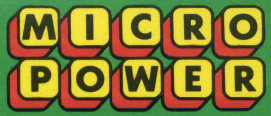
Micro Power was a British company established in the early 1980s by former accountant Bob Simpson. The company was best known as a video game publisher, originally under the name Program Power. It also sold many types of computer hardware and software through its Leeds 'showroom' or via mail order.

Space Dungeon is a multidirectional shooter released as an arcade video game by Taito in 1981. Designed and programmed by Rex Battenberg, it was available both as a conversion kit and full arcade cabinet. An Atari 5200 port was published in 1983.
XOR is a puzzle video game created by Astral Software and published by Logotron in 1987 for the Acorn Electron, Amiga, Amstrad CPC, Atari ST, BBC Micro, Commodore 64, and ZX Spectrum.
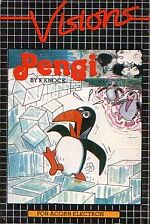
Pengi is a game for the Acorn Electron and BBC Micro, released by Visions Software in 1984. It is a direct clone of the 1982 Sega arcade game Pengo, even down to calling the enemies "snow bees," as in the original.

Armagetron Advanced is a multiplayer snake game in 3D based on the light cycle sequence from the film Tron. It is available for Linux, macOS, Microsoft Windows, AmigaOS 4 and OpenBSD as free and open-source software.

Advanced Dungeons & Dragons: Treasure of Tarmin is a video game for the Intellivision video game console and the Mattel Aquarius computer system. This game was a licensed Dungeons & Dragons adaptation. It is a successor game to Advanced Dungeons & Dragons: Cloudy Mountain (1982).

Super Glove Ball is a game made by Rare in 1990 for the Nintendo Entertainment System, specifically designed to be played with the Power Glove controller. However, it can also be played with a standard NES controller. It was sold separately from the Power Glove.
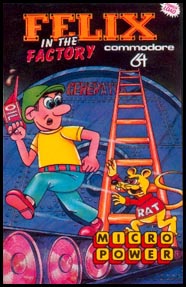
Felix in the Factory is a platform game written by John Chaytor for the BBC Micro and published by Micro Power in 1982. Versions were released for the Acorn Electron (1983), Commodore 64 (1984), and Memotech MTX (1984). It is the first in a trilogy of Micro Power games featuring the factory worker Felix and was followed by Felix and the Fruit Monsters and another factory-based platformer, Felix meets the Evil Weevils.
Positron is a fixed shooter written by Gary Partis for the BBC Micro and Acorn Electron and published by Micro Power in 1983. It was developed on a pre-release Electron and was one of the few games available for the machine on its launch.

In video games, first-person is any graphical perspective rendered from the viewpoint of the player character, or from the inside of a device or vehicle controlled by the player character. It is one of two perspectives used in the vast majority of video games, with the other being third-person, the graphical perspective from outside of any character ; some games such as interactive fiction do not belong to either format.

Ravenskull is a British graphic adventure video game. It was originally developed by Martin Edmondson and Nicholas Chamberlain for the BBC Micro and Acorn Electron and released by Superior Software in 1986.

Cops 'n' Robbers is a video game published by Atlantis Software in 1985 for the VIC-20 and in virtually identical form on the Commodore 64. It was ported to the Commodore 16 and Commodore Plus/4 (1986), Acorn Electron and BBC Micro (1987), and Atari 8-bit computers (1988). The game was controversial when released as the player takes the role of a robber and must shoot the police.

Tunnel Runner is a first person maze game released by CBS Electronics in 1983 for the Atari 2600. It was programmed by Richard K. Balaska Jr. Tunnel Runner is one of three CBS games for the Atari 2600 with an additional 256 bytes of RAM in each cartridge, a feature promoted by CBS as "RAM Plus." The other two RAM Plus games are Mountain King and the port of Omega Race.
Strafing in video games is a maneuver which involves moving a controlled character or entity sideways relative to the direction it is facing. This may be done for a variety of reasons, depending on the type of game; for example, in a first-person shooter, strafing would allow one to continue tracking and firing at an opponent while moving in another direction.
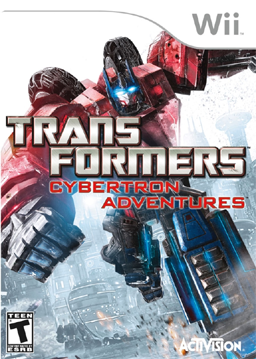
Transformers: Cybertron Adventures is an action-adventure video game based on the Transformers franchise, developed by Next Level Games and published by Activision. It is a companion game to High Moon Studios' Transformers: War for Cybertron, released exclusively for the Wii in June 2010. Like War for Cybertron, it features separate campaigns for the Autobots and the Decepticons, with the player being able to choose either faction to play as. The game received mixed to negative reviews from critics.
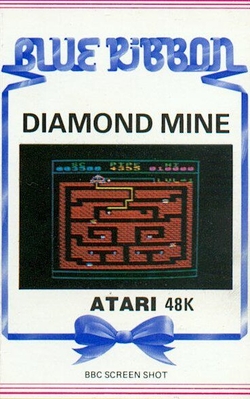
Diamond Mine is a maze video game first published by MRM Software for the Acorn Electron and BBC Micro home computers in 1984. Diamond Mine was reissued by Blue Ribbon in 1985 and ported to other systems in 1985 and 1986. Blue Ribbon released a sequel, Diamond Mine II, at the same time. Both games are similar to the 1983 game Oil's Well, which itself is a re-themed version of the 1982 Anteater arcade video game.

Perplexity is a video game created by Ian Collinson for the Acorn Electron and BBC Micro and published by Superior Software in 1990. It is a pseudo 3D maze game with Sokoban-style puzzles.

Bolo is a video game written by Jim Lane for the Apple II and published by Synergistic Software in 1982. It was inspired by Keith Laumer's 1976 science fiction novel Bolo: Annals of the Dinochrome Brigade, which featured self-aware tanks.
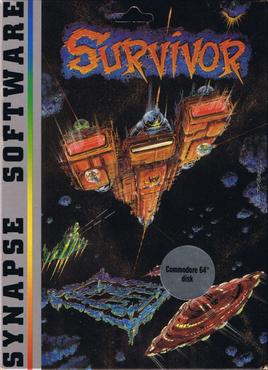
Survivor is a multidirectional scrolling shooter written by Richard Carr for Atari 8-bit computers and published in 1982 by Synapse Software. A Commodore 64 port by Peter Adams was released in 1983.
















